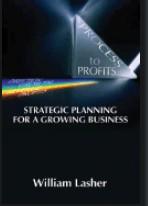Question
1. From Jan 2008 to Jan 2009 the British pound to U. S. dollar exchange rate increased from 1.9702 pounds per dollar to 1.4462 pounds
1. From Jan 2008 to Jan 2009 the British pound to U. S. dollar exchange rate increased from 1.9702 pounds per dollar to 1.4462 pounds per dollar. A U. S. based investor buys a one-year pound denominated bond for $2,000 in Jan 2008. One year later the bond provides 4% rate of return in yen. What is the rate of return in dollars?
2. From Jan 2008 to Jan 2009 the Japanese yen to U. S. dollar exchange rate decreased from 107.81 yen per dollar to 90.12 yen per dollar. Which one of the following statements describes this change?
A.) U. S. dollar appreciated against the yen by approximately 16%
b.) U. S. dollar appreciated against the yen by approximately 19%
c.) U. S. dollar depreciated against the yen by approximately 19%.
d.)U. S. dollar depreciated against the yen by approximately 16%
3. From Jan 2008 to Jan 2009 the Japanese yen to U. S. dollar exchange rate decreased from 107.81 yen per dollar to 90.12 yen per dollar. A U. S. based investor buys a one year yen denominated bond for $2,000 in Jan 2008. One year later the bond provides 1% rate of return in yen. What is the rate of return in dollars?
4.The Australian dollar increased from US $ 0.66 to US $ 1.03 per Australian dollar over the four year period of Feb 2009 to Feb 2013. What is the annualized rate of appreciation?
5. The euro to dollar changed from 1.38 dollars per euro in Feb 2014 to 1.13 dollars per euro in Fen 2019. What is the approximate annualized rate of depreciation over this five year period?
Step by Step Solution
There are 3 Steps involved in it
Step: 1

Get Instant Access to Expert-Tailored Solutions
See step-by-step solutions with expert insights and AI powered tools for academic success
Step: 2

Step: 3

Ace Your Homework with AI
Get the answers you need in no time with our AI-driven, step-by-step assistance
Get Started


